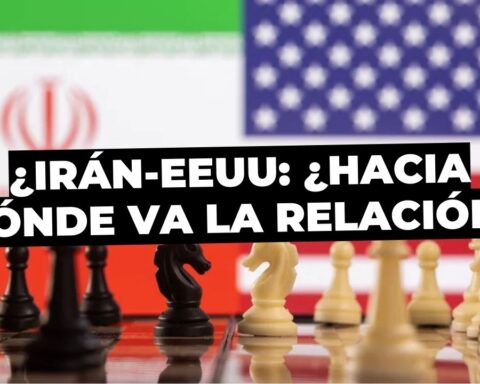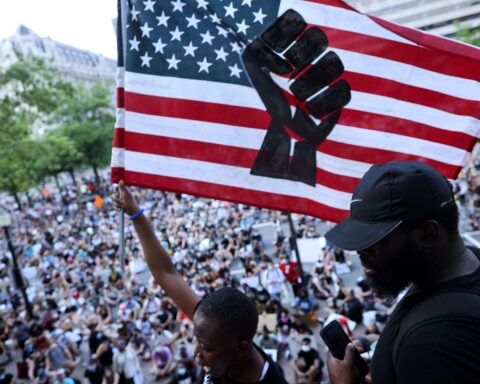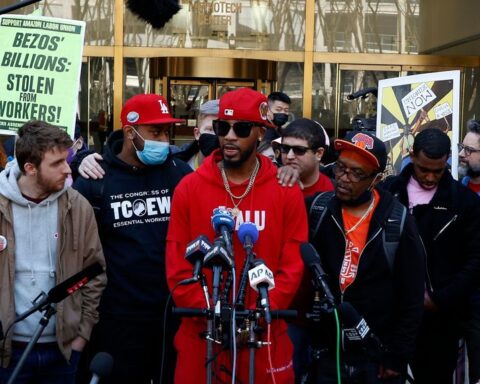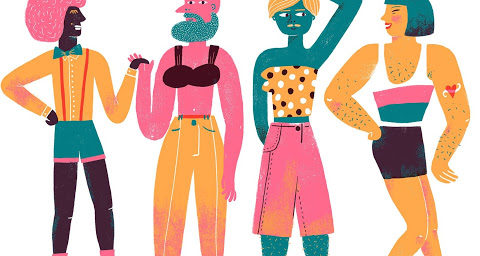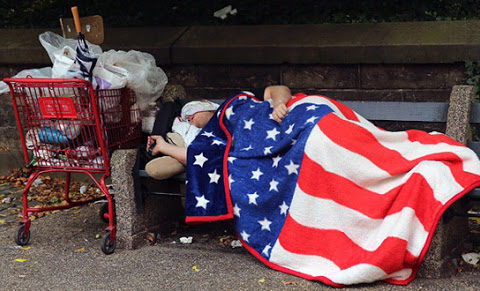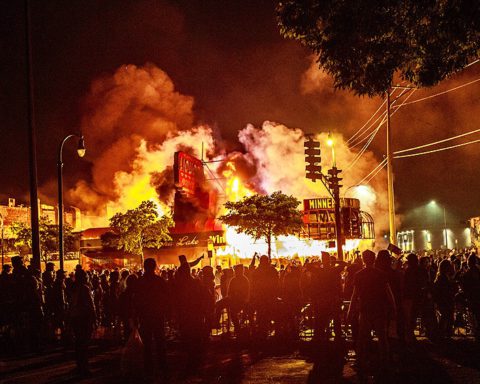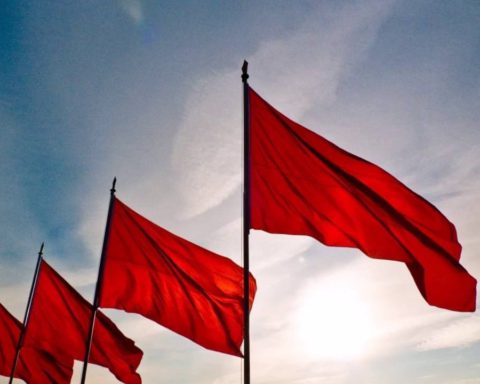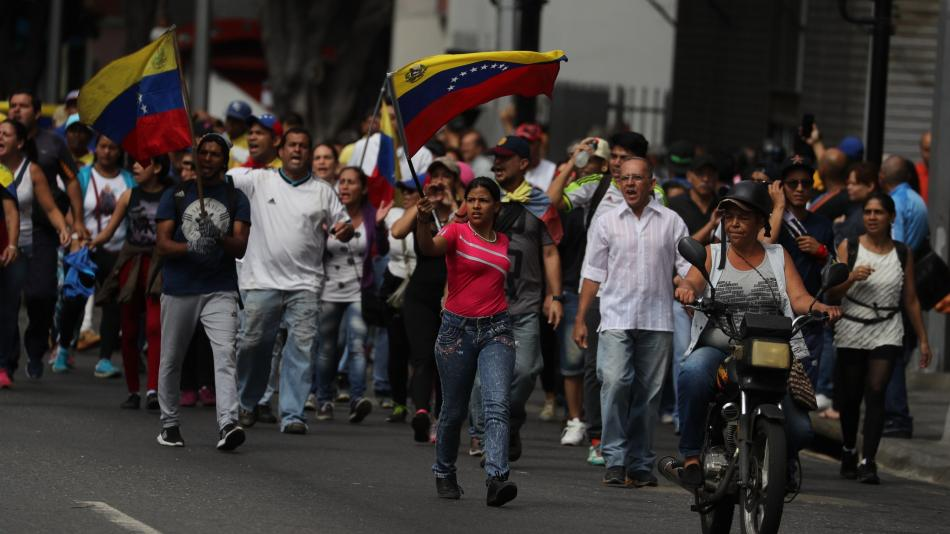The murder of George Floyd, a 46-year-old African American living in the city of Minneapolis at the hands of the police, outraged an important part of the American working class. The arrest took place at a city’s store, after Floyd tried to pay using a fake $20 bill. A few hours later a video of the arrest started to circulate, where it can be seen how the police kept him around 10 minutes on the floor with an officer kneeling on his neck, cutting off air intake. On the video Floyd can be seen shouting “I cannot breathe”, but the police still continued with the violence. Floyd was taken to a hospital, where he died a few hours later.
Protests began on tuesday in Minneapolis and were quickly repressed by the local police. However, this did not intimidate the protesters, who continued to mobilize the following days, even expanding to its twin city St. Paul. Thursday was the day on which Floyd’s video reached its peak and unleashed a wave of rage among people. The mobilization headed towards the local police office and set it on fire. There were attacks to nearby businesses and marches to the city hall. As a response, the democrat Mayor, Jacob Frey, imposed a curfew of 3 days starting on friday night and called for reinforcements from the National Guard. Despite this, protesters remained on the streets.
Protests spread across other states. In California, a group of people blocked streets in Los Angeles and smashed car windows belonging to the State Highway Patrol. On friday, the police arrested 533 individuals and on saturday, Mayor Eric Garcetti imposed a curfew. Also, in this same state there were protests in Oakland and a police was shot dead.
In Louisville (Kentucky) there were road blockades, attacks on the police and to the statue of Louis XVI across city hall. In response, there was a strong repression, 7 people ended up in the hospital with gunshot wounds. In Louisville the police killed Breonna Taylor last march, a black woman who aspired to become a nurse. Taylor was murdered by 8 shots in her apartment where the police was conducting a search warrant. A similar repressing situation took place in the protests in Denver, with the exception that there were no injured people.
In New York, police arrested 70 demonstrators at Union Square. In spite of this, demonstrations carried on and other 200 people were detained today. In Columbus (Ohio) protesters broke into the city hall building, smashing everything in sight and had to be dispersed by a SWAT team. Mayor Andrew Ginther imposed a curfew for today.
In Phoenix (Arizona), police declared the protests illegal, but demonstrators refused to disperse chanting “I cannot breathe”. Police cracked down with rubber bullets and tear gas. In Houston there were also mobilizations, resulting in 137 arrests.
Philadelphia is among other cities where protests expanded as did encounters with the police. As in other cities, democrat mayor Jim Kenney responded with repression and a curfew for saturday night. In Atlanta, democrat mayor Keisha Lance Bottoms applied the same policy.
Demonstrations didn’t end there, there were also protests in Albuquerque (New Mexico), Cincinnati and Cleveland (Ohio), Chicago (Illinois), Pensacola and Miami (Florida), Newark (New Jersey), Indianapolis (Indiana), Des Moines (Iowa), Milwaukee (Wisconsin), Washington D.C., Denver (Colorado), Austin (Texas). In addition to attacks on the police, numerous protests were directed at the town halls, seats of local governments, and ultimately, to the very same doorsteps of the White House. The crackdown claimed its first victim in Detroit, where a demonstrator was shot dead on saturday.
The state response not only encompassed repression and curfew. In the face of the crisis, 4 policemen linked to the incident were discharged from the force and one was accused of third-degree murder. This fueled mobilizations even further. A third-degree murder accusation means that the crime was carried out “without intent”, and therefore, carries a lesser sentence.
State complicity on this point is clear. Witnesses point to the police holding Floyd between 8 and 10 minutes on the floor, one of them kneeling on his neck, even though he didn’t oppose any resistance and during the last 3 minutes his body was flaccid, already without oxygen.
Trump only managed to criticize demonstrators and cross democrats for their inability to control the protests and offered to deploy the National Guard over the most conflictive territories. The offer was accepted throughout several cities, where additional agents were deployed and a violent crackdown took place. That is, both democrats and republicans agree in that order must be restored one way or the other, at all costs.
Particularism is not a way out of police violence.
In the wake of this scenario, all of the left and human rights organizations denounced racism and police violence. However, these partial complaints leave aside repression as a state policy and are only the tip of the iceberg of a larger issue.
In the U.S., there are annually over a thousand deaths at the hands of the police. If we take the 2019 data alone, there were 307 whites, 235 blacks, 158 hispanics and other 202 people where race is not identified, murdered. A similar trend was repeated the previous years. This shows, on the one hand, that police repression encompasses all of society. On the other hand, if we consider that black people only represent 13% of the American population, it’s clear that is the most persecuted segment.
The Inter-American Commission on Human Rights warned about this situation back in 2018 where it analized the various aspects of racial discrimination, both in police and judicial institutions and the excessive use of force as a state policy.
Another proof of this is that the policeman accused of murder, Derek Chauvin had a long record of abuse, including three incidents with shootings, around 13 complaints and 3 letters of reprimand all of which were closed without any disciplinary measure being taken. Even so, he was awarded the department’s Courage Medal for his service during 2009. That is, the State not only allows repression, but glorifies it too.
A second element to analize are mobilizations. It’s a major protest movement engulfing the main cities and which mobilized a part of the working class. Most of the protests were called by human rights organizations such as Black Lives Matter, The Gathering for Justice and Mass Action Against Police Brutality, under the slogan to end police violence and persecution of black people.
It’s worth noting this is about a fraction of the working class deeply affected by the crisis and worsened by the pandemic. The mobilization thus becomes a way to release built-up tension against the whole of the bourgeois state. It shows a tendency of the masses to rise up and an attempt of response to the crisis.
However, particularistic politics encapsulate the fight. Specifically, because it’s left forgotten that the State represses the working class as a whole, both in mobilizations, as when innocent workers are murdered or when a curfew is imposed. It’s not the first time that such an uprising occurs in this country. Perhaps the one that had the most impact was that of Rodney King, a taxidriver beaten to death by the Los Angeles police in 1992. Police violence unleashed an insurrection in the city which began to die down as the days passed.
Therefore, to give continuity to the movement, it’s necessary to abandon particularism and demand a solution for the whole of the working class. The main demand should be the end of state repression, the organization of an independent workers’ commission to investigate all cases of violence. But the most important aspect is to develop a national centralization of all struggles to face the crisis and lay out a workers’ response. The problem is not only of skin color but also of class.
Razón y Revolución


